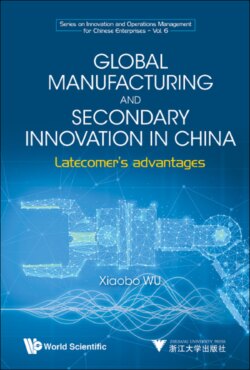Читать книгу Global Manufacturing and Secondary Innovation in China - Xiaobo Wu - Страница 17
На сайте Литреса книга снята с продажи.
1.2.4 Investable industries increasingly diversify, and the technology-driven investment becomes the major trend
ОглавлениеThe outbound investment of China’s manufacturing industry has been developing and implementing the strategy of diversification. During the three years from 2003 to 2015, China’s manufacturing industry invested into an increasingly diverse range of industries. In 2003, the industrial sectors outside China invested by China’s manufacturing industry mainly included electronic equipment manufacturing, textile industry, ferrous metal smelting and rolling processing industry, etc. After more than ten years of globalization, in 2015 the scope was expanded to cover electronic equipment, transportation facilities, general-purpose equipment, special equipment, medicine, textile manufacturing, non-ferrous metal smelting, rolling processing, metal product and wood processing industry, etc.
At the same time, in the continuously deepening globalization, the motivation of China’s manufacturing industry for overseas investment gradually shifted from pursuing foreign trade opportunities and natural resources to acquiring strategic assets such as technology and brands, etc. Among such motivations, technology acquisition was the most common one. Through Greenfield investment, establishing overseas parks and incubators, Chinese manufacturing industry tried to foster advanced technologies. By acquiring overseas high-tech institutions, building R&D alliance with overseas institutions, etc, Chinese manufacturing industry tried to acquire overseas advanced technologies. Among them, self-constructed overseas R&D institutions (Greenfield) and M&As with overseas high-tech institutions were the most common pathways. For example, SANY Heavy Industry built its R&D and manufacturing base in the United States in 2008. It developed new products such as rough-terrain cranes and crawler cranes widely welcomed in the North American market. In 2014, Wanxiang acquired Fisker, a company with complete new energy vehicle production capacity, at a price of USD 150 million. Wanxiang obtained the manufacturing technology and intellectual property rights for new energy vehicles, including 18 design patents, invention patents and brands through the acquisition. This completed the strategic deployment of Wanxiang in new energy vehicle field, and assisted Wanxiang in rapidly integrating electric vehicle manufacturing technologies.
